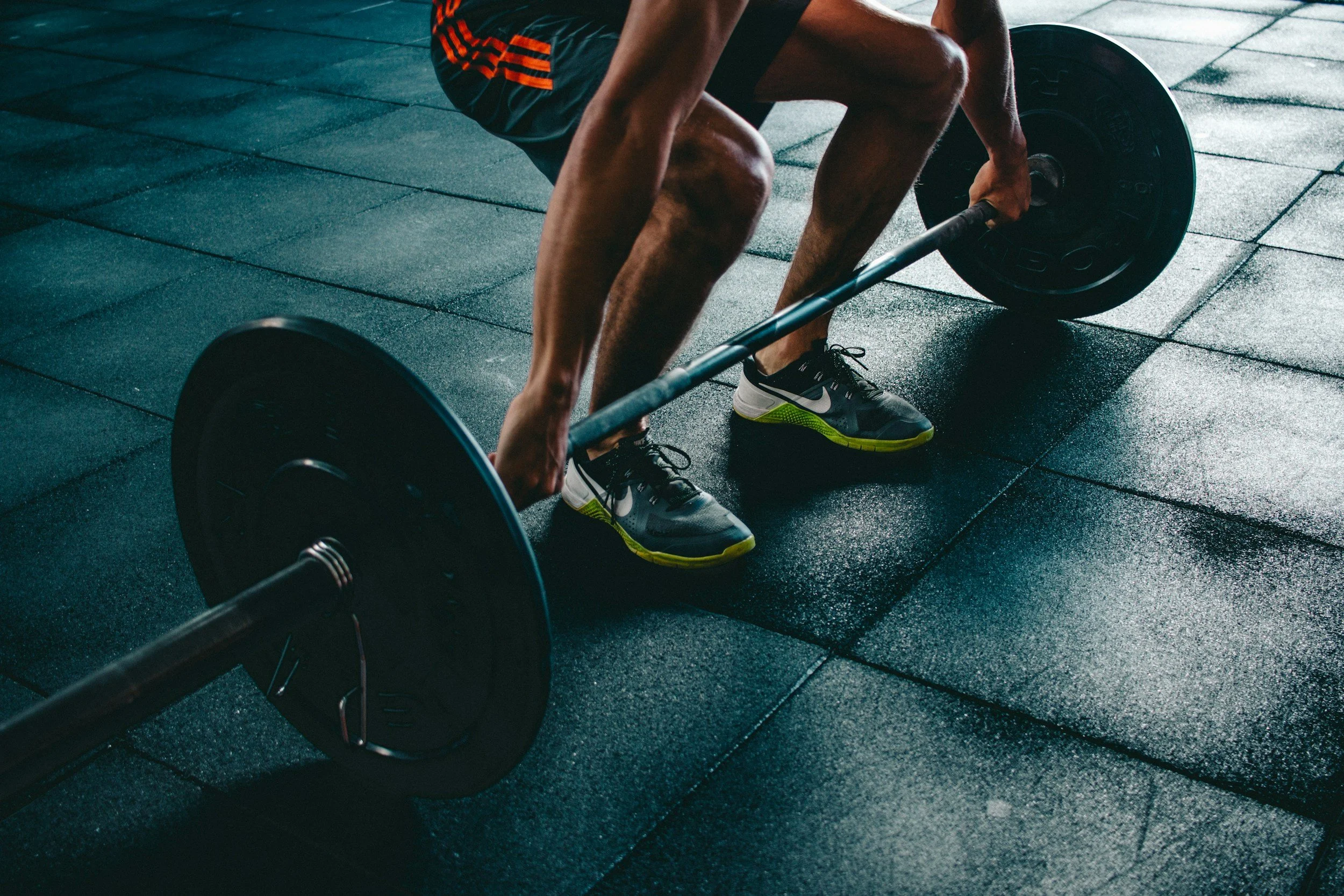Muscle: The Most Overlooked Investment in Your Future Health
When we talk about insurance, we’re usually talking about the kind that covers things that might go wrong. You hope you never need it. You pay into it, just in case. But muscle? Muscle is the kind of insurance that pays off *every single day, *whether disaster strikes or not.
Muscle isn’t just about how you look in the mirror. It’s about how you live. And more importantly, how long and how well you’re able to live as you age. Whether we’re talking body composition, bone density, cognitive health, independence, or simply the confidence to say yes to what life throws your way, lean muscle mass might just be the most underrated “insurance policy” you’ll ever invest in.
Strength Is About Capability, Not Just Aesthetics
One of the first things I talk about with clients, especially those in midlife or older, is that strength training isn’t about chasing six-pack abs. It’s about being capable.
Capable of lifting your own carry-on bag into the overhead bin. Of playing with your kids or grandkids rather than watching from the sidelines. Of helping your daughter move, tackling a landscaping project, or saying “yes” to a spontaneous hiking trip. Capable of saying “I’ve got this” when life demands physicality.
These might seem like small things, but they add up to something bigger...something foundational. It’s the difference between feeling like life is happening to you, and feeling like you’re actively participating in it.
And in many ways, it's the physical foundation that supports your mental and emotional resilience, too. When you feel strong in your body, you're more willing to take risks, explore new things, and step outside your comfort zone. It becomes a positive feedback loop. Strength builds confidence, and confidence invites new experiences.
The Everyday Power of Lean Muscle Mass
Here’s what people often overlook: muscle isn’t just about strength, it’s metabolically active tissue. That means the more lean mass you carry, the higher your resting metabolic rate. Your body burns more energy just existing. And that has huge implications for your quality of life as you age.
In practical terms? It means you can enjoy your meals out, travel experiences, and birthday celebrations with a little less anxiety. You’re less likely to gain weight from the occasional indulgence because your system is simply more resilient. That doesn’t mean you can eat whatever you want without consequence, but it does mean your body is better equipped to process and manage those indulgences.
This is a huge shift in how we think about “aging well.” It’s not about getting smaller or doing less, it’s about building a life that can accommodate more.
It also means that if you do decide to embark on a fat loss phase, your body is more likely to retain lean mass, which is critical. Muscle preservation during a calorie deficit is one of the keys to successful body recomposition. Without it, people often lose weight, but at the cost of both fat and muscle, which leaves them weaker and less metabolically active than before.
Think of it this way: your muscle is your metabolic engine. You want to maintain as much of that engine as possible as you age, not just for appearance or performance, but for the freedom and flexibility it affords you in your everyday life.
Preventing Sarcopenia, Osteoporosis, and Everything That Comes With Them
Sarcopenia is the gradual loss of muscle mass that starts creeping in around age 30, and accelerates after 60. It’s one of the major contributors to frailty, falls, fractures, and loss of independence in older adults. And while the process is natural, its effects are anything but benign.
But here’s the good news: it’s not inevitable. Resistance training, especially when done consistently and progressively, can dramatically slow or even reverse that decline.
The same is true for osteopenia and osteoporosis. When you challenge your muscles, you also challenge your bones. Heavier resistance training helps preserve bone density, reducing your risk of fractures from something as simple as a stumble.
One study published in the Journal of Bone and Mineral Research showed that women aged 65+ who engaged in high-intensity strength training had improvements in bone density, functional strength, and posture. Another found that strength training reduced fall risk by up to 43% in older adults.
These aren’t minor improvements, they’re life-altering differences. The ability to avoid a fall or recover from one without major injury can be the difference between continuing to live independently and entering a care facility.
The takeaway is clear: strength isn’t optional. It’s protective.
Use It or Lose It: The Forgotten Movements That Matter
Movement patterns degrade too. If you don’t regularly lift things overhead, your body will begin to limit that range of motion. You might not notice until the day comes that you need to reach, twist, or balance...and your body says no.
Sometimes it’s not even about structural limitation, it’s about your brain putting the brakes on a movement it doesn’t trust. If your nervous system perceives a movement as unsafe (especially under load), it may restrict range of motion or coordination. This is why people often say, “I used to be able to do that, but now it feels wrong.”
Balance is another big one. If you’re not regularly engaging in movement or activity that challenges your balance in different planes, your body becomes less capable of making fine adjustments. That’s when you start seeing gross compensations, like wobbling, flailing arms, or catching yourself on furniture.
This is why functional strength training (especially when it involves rotation, lateral movement, and real-world movement patterns) is so important. It helps maintain the brain-body connection that allows for graceful, responsive movement.
Cognitive Benefits: A Sharper Mind Through Stronger Muscles
This one doesn’t get talked about enough: strength training is good for your brain, too.
Emerging research shows that regular resistance training can significantly improve cognitive domains like executive function, attention span, and processing speed. These benefits are most pronounced when training is done at moderate-to-high intensity, at least twice per week, over a sustained period.
It’s not entirely clear why this happens (some theories point to increased circulation and oxygenation, others to neurochemical shifts or reductions in systemic inflammation) but the results are consistent. Strong muscles support a sharp mind.
Some researchers even believe that the neurological benefits of resistance training could rival those of aerobic activity when it comes to preserving brain volume and staving off degenerative conditions like Alzheimer’s.
And when you consider that cognitive decline is one of the most feared aspects of aging? That’s one more powerful reason to pick up the weights.
Glen’s Story: Aging Well, Not Just Aging Longer
This idea hit home for me in a very personal way.
My late stepfather, Glen, was a powerful example of someone who used movement not just to live longer, but to live well. He was a lifelong athlete, having played football at Queen’s University and winning a Vanier Cup with their 1968 team. But what’s even more impressive is what he did after those glory days were behind him.
Well into his senior years (and even through his 20-year battle with prostate cancer) Glen continued to lift weights, run, cross-country ski, and stay active in any way he could. He passed away at the age of 74, but not before showing those around him what it meant to live with strength and intention every day.
Glen spent his retirement years on his feet, renovating the house, fixing the plumbing, and diving into every hands-on project he could dream up. He was the guy people called when they needed help building a fence, replacing a window, or pulling up old flooring. And he did it joyfully.
One of the things I admired most about him was his posture, both literally and figuratively. Even in his 70s, he moved with purpose. He stood tall. He didn’t shuffle. He didn’t rely on grab bars or extra supports. He had strength, balance, and coordination, and it gave him the freedom to say yes to life.
He’s one of the reasons I’m so passionate about this topic. Through him, I’ve seen what’s possible when someone embraces strength and movement as tools for better living, not just as fitness goals.
Muscle Builds Confidence
There’s a psychological shift that happens when someone gets stronger.
With my older clients especially, I see them stand a little taller. Not just physically, but emotionally. They’re not as anxious about injury. They aren’t worried about “keeping up” with others. They’re more open to big adventures like kayaking trips or walking the Camino de Santiago because they know they’re up to the task.
And one of my long-time senior clients (now well into her 70s) recently retired from volunteering at the Abbotsford Food Bank’s Starfish Backpack program, where she hauled backpacks full of food up and down stairs every single week. That’s strength put to meaningful use. That’s the kind of quiet capability that truly reflects Georges Hébert’s motto: Être fort pour être utile — “Be strong to be useful.”
That kind of confidence is quiet, but powerful. It doesn’t shout. It doesn’t need to prove anything. It just shows up, day after day, in the willingness to take on life fully.
And that self-assurance often spills over into other areas of life: work, relationships, decision-making. Strength isn’t just something you *have, *it becomes something you embody.
It’s Easier to Maintain Than Regain
One of the biggest takeaways I share with older clients is this: it’s much easier to maintain capacity than to regain it once it’s lost.
If you’ve been out of the game for a while, don’t panic. It’s never too late to start. But understand this: the longer you wait, the harder it gets to rebuild. Starting now means preserving the mobility, resilience, and independence that your future self is counting on.
And don’t underestimate how fast decline can set in when you stop moving. Studies show that even 10 days of bed rest in older adults can lead to measurable decreases in muscle size, insulin sensitivity, and VO2 max. The body is efficient, and if it doesn’t think you need something, it will stop maintaining it.
Strength training now means less fear later. Less fear of stairs. Of slipping. Of travelling. Of new experiences. It creates a foundation that gives you options, not limitations.
The Takeaway: Build It Now, So It’s There When You Need It
Muscle doesn’t just matter when you’re in the gym. It matters when you’re on a ladder, on a plane, on a trail, or just trying to get up off the floor.
It matters when you fall, when you carry groceries, when you chase your grandkids, or when you have a big adventure planned and you want to say yes without hesitation.
It’s not just about how long you live, it’s about how well you live. How capable, independent, and confident you feel moving through the world.
So if you’re not strength training yet? Now’s the time.
And if you already are? Keep going. Your future self will thank you.
Because muscle isn’t just about aesthetics.
It’s your most underrated insurance policy...and one of the best investments you can make in yourself.
References:
Watson, S. L., Weeks, B. K., Weis, L. J., Harding, A. T., Horan, S. A., & Beck, B. R. (2018). High-intensity resistance and impact training improves bone mineral density and physical function in postmenopausal women with osteopenia and osteoporosis: the LIFTMOR randomized controlled trial. Journal of Bone and Mineral Research, 33(2), 211–220. https://doi.org/10.1002/jbmr.3284
Sherrington, C., Michaleff, Z. A., Fairhall, N., Paul, S. S., Tiedemann, A., Whitney, J., ... & Lord, S. R. (2017). Exercise to prevent falls in older adults: an updated systematic review and meta-analysis. British Journal of Sports Medicine, 51(24), 1750–1758. https://pubmed.ncbi.nlm.nih.gov/27707740/





